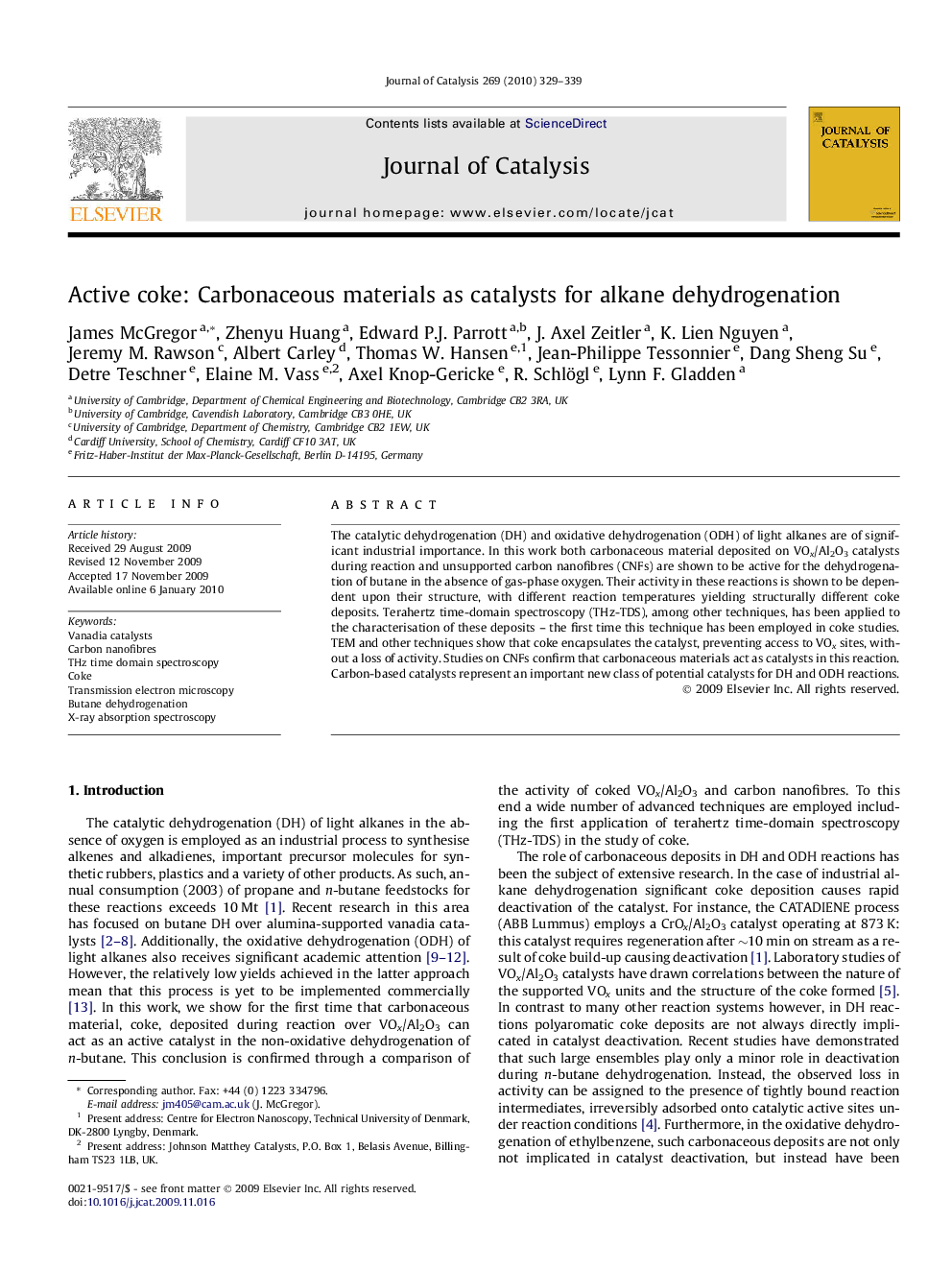| Article ID | Journal | Published Year | Pages | File Type |
|---|---|---|---|---|
| 62020 | Journal of Catalysis | 2010 | 11 Pages |
The catalytic dehydrogenation (DH) and oxidative dehydrogenation (ODH) of light alkanes are of significant industrial importance. In this work both carbonaceous material deposited on VOx/Al2O3 catalysts during reaction and unsupported carbon nanofibres (CNFs) are shown to be active for the dehydrogenation of butane in the absence of gas-phase oxygen. Their activity in these reactions is shown to be dependent upon their structure, with different reaction temperatures yielding structurally different coke deposits. Terahertz time-domain spectroscopy (THz-TDS), among other techniques, has been applied to the characterisation of these deposits – the first time this technique has been employed in coke studies. TEM and other techniques show that coke encapsulates the catalyst, preventing access to VOx sites, without a loss of activity. Studies on CNFs confirm that carbonaceous materials act as catalysts in this reaction. Carbon-based catalysts represent an important new class of potential catalysts for DH and ODH reactions.
Graphical abstractCarbonaceous material deposited on VOx/Al2O3 is shown to provide the catalytically active sites for n-butane dehydrogenation at 973 K. The activity of carbon is confirmed through studies on carbon nanofibres.Figure optionsDownload full-size imageDownload high-quality image (85 K)Download as PowerPoint slide
